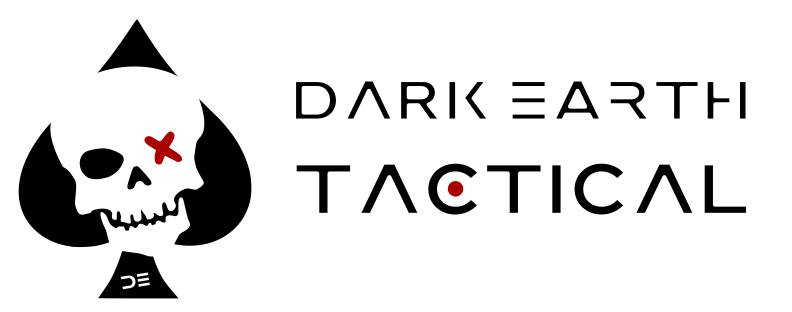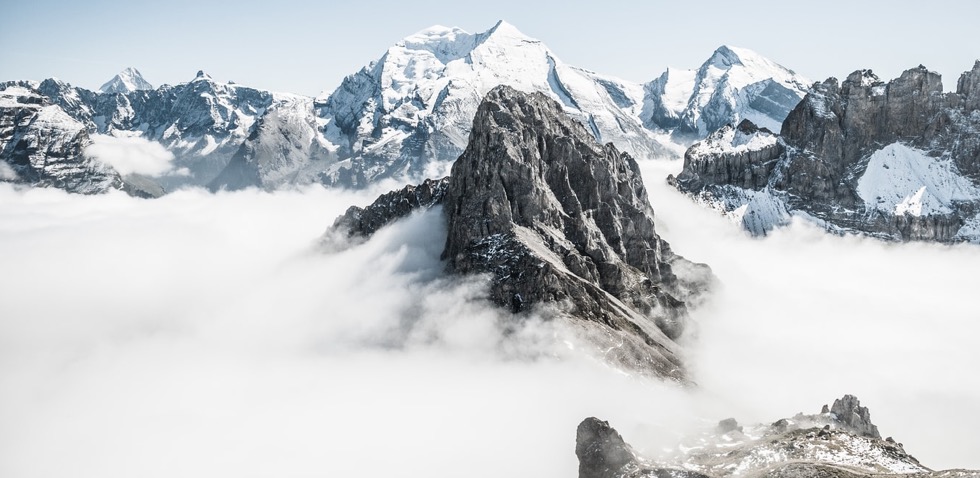Close distance shooting doesn’t require much knowledge in terms of external ballistics, but when it comes to those longer shots, external factors such as altitude and barometric pressure need to be seriously considered and accounted for, otherwise a miss is almost guaranteed. The effects of altitude and air pressure on a bullet during flight is often far more drastic than what a newbie would come to expect, and for that reason I have chosen to write this blog; to instil some knowledge and hopefully increase your long range hit percentage. So how does altitude affect your bullet, and what can you do to counteract the effects?
Well simply put, variations in altitude cause changes in air pressure, and shooting at a higher altitude typically means shooting through thinner air. This results in a faster travelling projectile with a flatter trajectory. If this change in trajectory is not accounted for, the bullet will impact high. The solution is to re-calculate your trajectory based on current atmospheric conditions during the time of shooting, and continuously update these as and when required.
Let’s use an 800 meter shot as an example to demonstrate. If you were to move your firing point to an alternate location that sits 1000 meters (or 3300ft) higher in altitude, you can expect your bullet to impact around 50cm (or 20-inches) above your point of aim. Add in a 5°C increase in temperature and you’re looking at a miss of up to 70cm (or 28-inches). As seen in the following image, this would be complete miss at a man-sized target when aiming centre of mass. We are going to discuss this in more detail shortly, while giving some advice on how to overcome this problem and ensure the most accurate and consistent shooting possible.

So How Does Altitude and Air Pressure Affect a Bullet?
As we have previously discussed, variations in altitude and barometric pressure can have severe effects on a bullet’s point of impact – if not correctly accounted for. The difference between altitude and barometric pressure is as follows:
- Barometric Pressure – otherwise known as atmospheric pressure, this can be described as the weight of the air.
- Altitude – this can be described as the height of a shooter in relation to sea-level.
Standard sea-level pressure is 1013.25hPa (hectopascal). This can however change due to a number of reasons, disregarding altitude. In severe weather instances for example the pressure at sea-level can drop below 900hPa, which is equivalent to an average pressure reading at an altitude of 1000m or 3300ft.
When it comes to long range shooting, altitude and barometric pressure work together. But how do they affect ballistics?
Higher Altitudes – at higher altitudes a shooter can expect lower air pressure, meaning that the air is less dense and therefore thinner. The result is less air resistance (or drag) on the bullet, which means more efficient flight with the ability to shoot further. If no adjustments are made, the bullet will impact high.
Lower Altitudes – at lower altitudes closer to sea-level, a shooter can expect higher air pressure, meaning that the air is more dense and therefore thicker. The result is more air resistance on the bullet, slowing it down faster and therefore reaching transonic speed sooner. If no adjustments are made, the bullet will impact low.
Transonic Speed – the speed at which a bullet crosses the sound barrier; going from supersonic to subsonic speed. At this point the bullet typically loses stability, and the trajectory is no longer predictable. Effective range is reached.
How Much Does Altitude Really Affect a Bullet?
At closer distances, the point of impact shift due to a change in altitude may be negligible. At 100 meters for example, it is almost non-existent. However as the distance increases, so will the effect on the bullet’s trajectory. The following table will demonstrate these effects.
| Engagement Distance | Altitude: Sea-Level (1013hPa) | Altitude: 1000m (900hPa) | Altitude: 2000m (800hPa) |
| 100 meters | 0cm | 0cm | 0cm |
| 300 meters | 46cm | 44cm | 43cm |
| 600 meters | 322cm | 304cm | 288cm |
| 900 meters | 1014cm | 927cm | 857cm |
| Effective Range | 925 meters | 1050 meters | 1175 meters |
We can clearly see by looking at the table above, that as altitude climbs an the air gets thinner, the bullet’s trajectory gets flatter. It is also evident that the rifle’s effective range increases with altitude. The above bullet shot from the same rifle is able to accurately travel and extra 250 meters (up to 1175 meters) when fired at an altitude of 2000 meters (800hPa) as apposed to shooting at sea-level.
We can also notice that at 300 meters, the difference in bullet drop is almost negligible; a couple of centimetres at most. This is why seasoned hunters may not even be aware of this altitude influence; because they do not need to account for it to hit their target. But for long range precision shooting, it is vital.
As a rule of thumb, absolute pressure will decrease approximately 33.85hPa for every 300m / 1000ft climbed, or 11hPa for every 100m / 330ft climbed.
How to Compensate for Altitude and Pressure
Adjusting for the trajectory effects caused by altitude change is best done through a ballistics program (or ballistics calculator). It is fairly simple, once the actual (absolute) pressure is entered into the ballistics program, your new trajectory will be provided for you.
Many ballistics programs will allow either corrected pressure or station pressure as an input, and without simple understanding of corrected vs. station pressure, things can become confusing. We will discuss this shortly.
If you prefer to do things old school, then a density altitude chart is the way to go. Using a density altitude chart means that you don’t need to rely on technology when out on the range, but it also requires a deeper understanding of ballistics and ballistics software in order to create the chart. The JBM Ballistics Trajectory Card allows for the input of multiple altitudes and temperatures, simplifying the creation of a personalised density altitude chart.
Barometric Pressure vs. Absolute Pressure
Barometric Pressure or Corrected Pressure – this is the pressure adjusted to an equivalent at sea-level, and is also known as sea-level barometric pressure. This is the reading commonly reported by local weather services or found online and through weather apps. It is corrected to sea-level pressure so that we have a common reference for pressure changes (usually for weather prediction). In other words, this measurement does not display the actual air pressure in which you are shooting, and should ideally be avoided when engaging long range targets.
If you are forced to use a corrected pressure reading on the range, then the following calculation will assist in producing a good approximate station pressure reading that can be entered into your ballistics program:
- METRIC CALCULATION: Barometric Pressure (hPa) – (Altitude in Meters / 9) = Station Pressure (hPa)
- IMPERIAL CALCULATION: Barometric Pressure (inHg) – (Altitude in Feet / 1000) = Station Pressure (inHg)
Absolute Pressure or Station Pressure – this is the pressure felt or recorded at the spot on which the shooter is taking a reading. It is the actual measurement of air pressure at the measurement point, and is achieved by using a weather meter or similar device. This is the reading which should be entered into your ballistics calculator.
Note: many modern smart watches are capable of accurately recording air pressure, and although most will display a corrected pressure reading, there are third party applications available for users wanting a station pressure reading. Ambient Pressure works really well on Garmin watches, as does TruFlite – our recommended smart watch ballistics app.
Read our review on TruFlite by clicking here: TruFlite: A Great Ballistics App for Your Smart Watch
Standard Pressures at Different Altitudes
If a barometric pressure or station pressure reading is not available on the day of shooting, the following standard pressures at different altitudes chart may be used.

While using this chart, it is important to note that as distance grows, these figures may cause some error in trajectory prediction, as there are many factors that can affect barometric pressure on the day.
Weather, temperature, humidity, and even diurnal pressure variation, which is an atmospheric tide that causes a maximum and minimum pressure to occur at approximately the same local time each day, are just a few factors that may cause a pressure change which differs to the standard or average pressures at altitude.
Summary
Now that we have discussed how altitude and pressure affect your bullet during flight, I hope that you will start to use ballistics software to predict accurate and current trajectories when out on the range.
Just to recap, we have mentioned three different methods of obtaining a pressure reading.
- Using a barometric or corrected pressure reading obtained from a local weather station, through online research, or through a weather app. Then use our calculation provided above to convert this into an absolute or station pressure reading.
- By use of a weather meter or pressure reading device, to provide an accurate absolute or station pressure reading.
- By making use of the standard pressures at different altitudes chart.
If you are still a little confused and need a further explanation in compensating for the effects of altitude and barometric pressure on a bullet during flight, pease leave a comment below.
And finally, good luck out on the range, and happy shooting.


11 thoughts on “The Effects of Altitude and Barometric Pressure on a Bullet During Flight”
This was an incredibly interesting read. As someone that generally prefers “combat” style shooting, these Panthaera articles have completely changed my perspective on long range precision shooting. The amount of science and calculation that goes into each and every shot makes this style of shooting incredibly rewarding.
Thank you for yet another incredible write up, and for sharing your wisdom with us! I really can’t wait to try and implement these techniques the next time I’m on the range! Thank you, Panthaera!
Excellent article, THX 👏👏👏